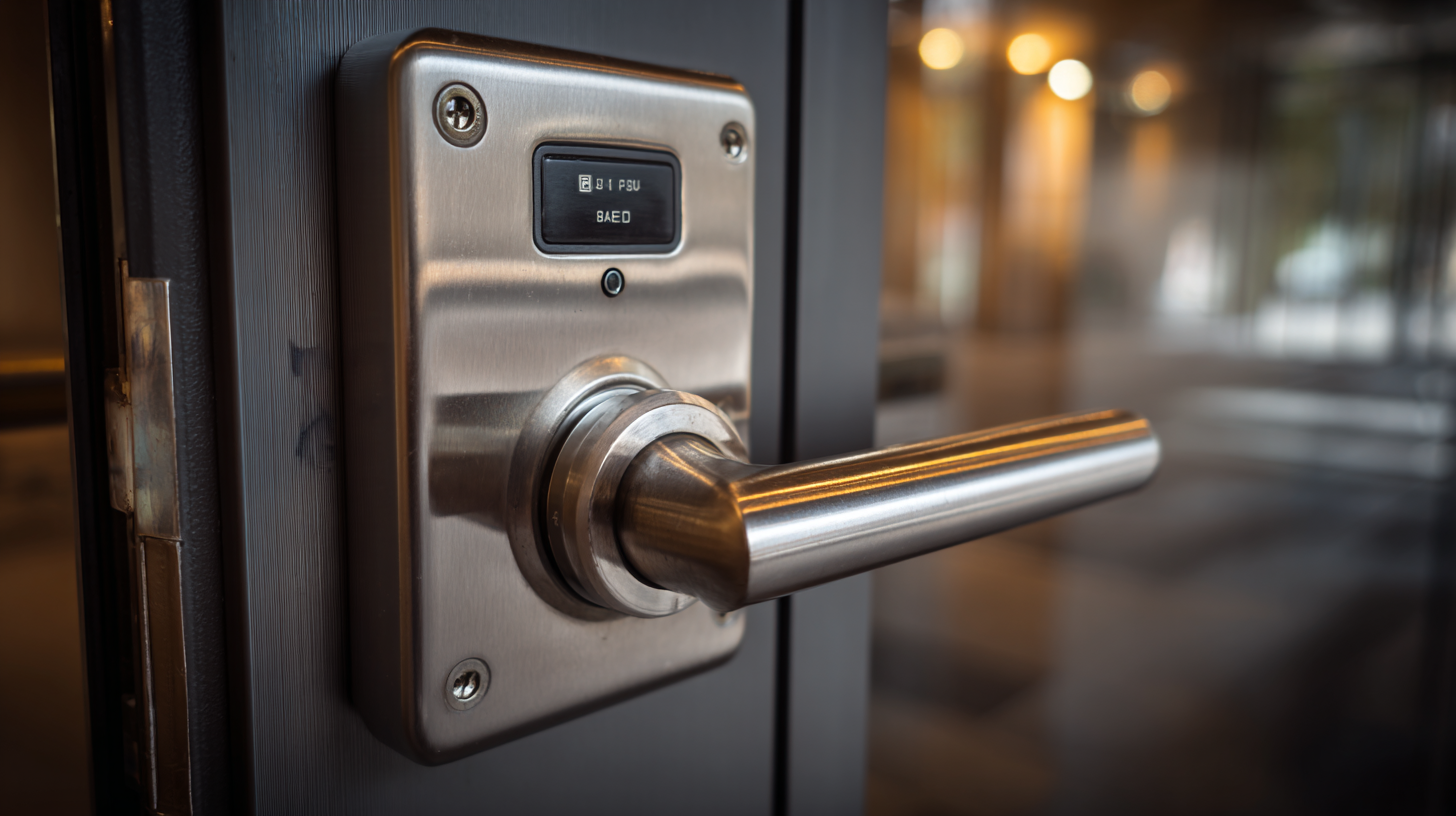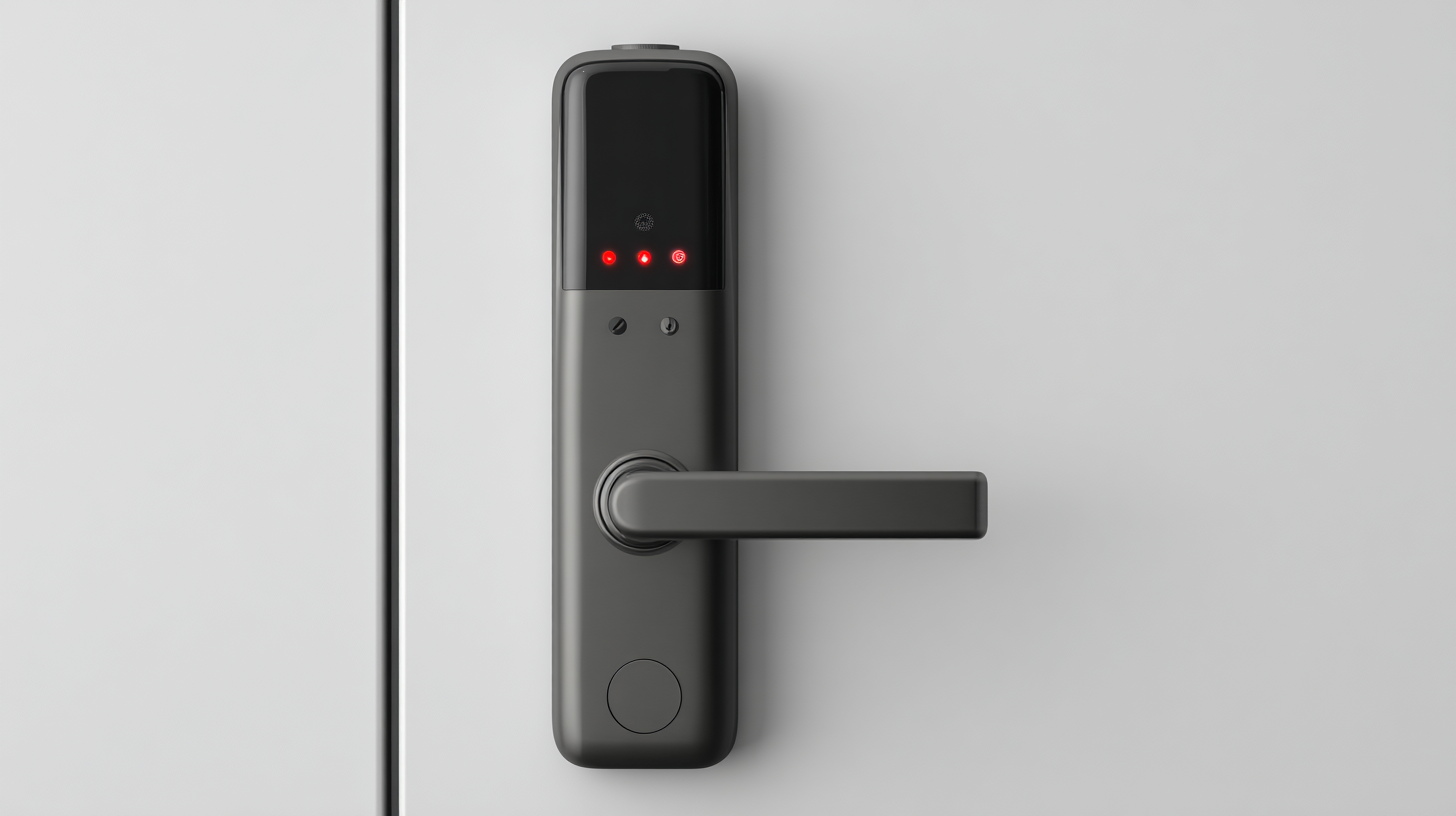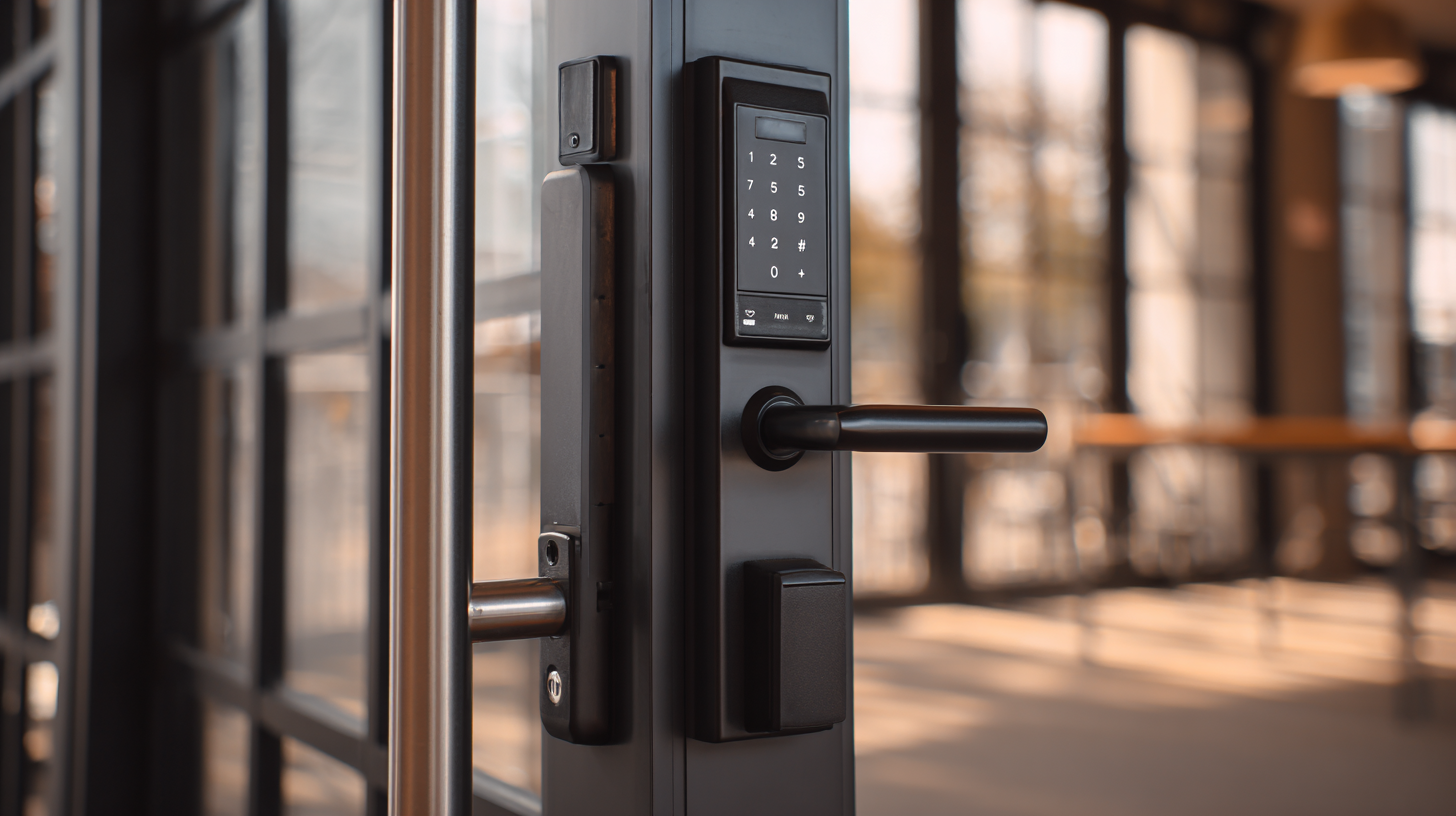Ultimate Guide to Access Control Door Lock Comparison for Global Buyers
In today's fast-paced world, ensuring the security of spaces has become paramount for both residential and commercial properties. One of the most effective ways to enhance security is through the implementation of Access Control Door Locks. These advanced locking systems not only provide an additional layer of protection but also offer convenience and flexibility in managing entry points. As global buyers consider various options available in the market, it is essential to understand the distinct characteristics and suitable applications of different types of Access Control Door Locks. This ultimate guide aims to delve into the comparison of these locks, highlighting their features, benefits, and ideal use cases to aid buyers in making informed decisions that align with their specific security needs.

Key Features to Consider in Access Control Door Locks for Global Markets
When considering access control door locks for global markets, understanding the key features is crucial for making an informed decision. One of the primary aspects to evaluate is the type of locking mechanism. Solutions can range from traditional mechanical locks to advanced electromechanical systems that offer enhanced security and convenience. Smart locks, which facilitate keyless entry and remote access via smartphones, are driving growth in the global market. The demand for these cutting-edge technologies reflects a broader consumer trend towards increasing security and automation in both residential and commercial applications.
Additionally, connectivity options play a significant role in accessing control solutions. The compatibility of locks with various connectivity technologies, such as Bluetooth and Wi-Fi, affects user experience and functionality. Buyers must also consider the scalability of systems, especially for businesses looking to expand. With the global smart lock market projected to reach USD 12.9 billion by 2032, choosing the right access control solution that aligns with both current and future requirements is imperative for global buyers. The continuous innovation in this space is indicative of the rising consumer demand for integrated smart-home systems and advanced security solutions.
Comparative Analysis of Traditional vs. Smart Access Control Systems
The comparative analysis of traditional versus smart access control systems highlights significant differences in functionality, security, and user experience. Traditional systems, often reliant on physical keys and mechanical locks, provide a basic level of security but lack the sophistication and adaptability needed to meet modern security demands. On the other hand, smart access control systems leverage advanced technologies such as biometrics, RFID, and mobile applications, offering enhanced monitoring, remote management, and integration with other smart technologies. This evolution reflects a broader trend in optimizing security measures to cater to a digital-first world.
Furthermore, the integration of IoT technologies in smart access control can be compared to other sectors, such as smart grids and sustainable energy solutions. Just as smart grids utilize real-time data to optimize energy distribution and increase efficiency, smart access systems can harness cloud connectivity to streamline access management and enhance security. Recent studies on blockchain's potential applications in access control also suggest that these systems can further increase trust and security in both residential and commercial environments. Embracing these innovations is vital for creating resilient and secure access management frameworks in today's interconnected world.
Ultimate Guide to Access Control Door Lock Comparison for Global Buyers
| Feature | Traditional Access Control | Smart Access Control |
|---|---|---|
| Cost | Lower initial cost | Higher initial investment; potential long-term savings |
| Installation | More straightforward; often DIY | Complex; typically requires professional setup |
| Security Level | Basic key or card access | Enhanced security features (e.g., biometrics, remote access) |
| User Management | Manual key distribution; limited tracking | Centralized management; real-time updates; audit trails |
| Maintenance | Generally low maintenance, some mechanical wear | Regular software updates; battery replacement |
| Accessibility | Physical keys or cards needed | Access via mobile devices; remote control possible |
| Integration | Limited integration with other systems | Easily integrates with IoT and security systems |
Global Market Trends in Access Control Door Locks: Data and Forecasts
In recent years, the global market for access control door locks has experienced significant growth, driven by increasing security concerns and advancements in technology. As businesses and residential properties prioritize safety, the demand for sophisticated locking systems has surged. According to market research, the access control door lock segment is projected to expand at a compound annual growth rate (CAGR) of over 8% through the next five years. This trend is not only reflected in sales figures but also in the diversity of product offerings, including biometric, smart locks, and traditional electronic systems.

The forecast indicates a notable shift towards smart access control solutions, with more consumers opting for integrated systems that offer convenience and remote monitoring capabilities. Companies are investing heavily in R&D to meet the evolving needs of global buyers, leading to innovative features like mobile access and robust encryption protocols. As urbanization continues and smart cities emerge, the role of access control door locks will become even more critical, making it essential for buyers to stay informed about market trends and technological advancements that can enhance security while providing ease of use.
Evaluating Security Standards: What Compliance Means for Buyers
When it comes to selecting the right access control door locks, understanding security standards and compliance regulations is essential for global buyers. Compliance often indicates a product’s adherence to certain safety and performance benchmarks, which can significantly reduce risks associated with unauthorized access. The most recognized standards, such as ANSI/BHMA, UL, and ISO, provide frameworks that ensure locks are resilient against various threats, including physical tampering and cyber-attacks. Buyers must familiarize themselves with these certifications to make informed decisions that meet legal requirements and security expectations in their respective regions.
Additionally, evaluating compliance means considering how these standards affect the functionality and durability of door locks. A compliant product not only offers reliable security but also contributes to the overall risk management strategy of an organization. For global buyers, discrepancies in security standards across countries could complicate choices, making it crucial to choose internationally recognized certifications. By prioritizing compliance with proven security standards, buyers can ensure that the access control solutions they select not only protect assets but also align with industry best practices and their specific operational needs.

The Impact of Technology on Access Control: Innovations Shaping the Future
The rapid advancement of technology significantly transforms the landscape of access control systems, making them more secure, convenient, and efficient. Innovations like biometric authentication, mobile access, and cloud-based management solutions are at the forefront of this evolution. According to a recent report by MarketsandMarkets, the global access control market is expected to grow from USD 8.6 billion in 2022 to USD 12.6 billion by 2027, reflecting a compound annual growth rate (CAGR) of 8.2%. This growth is largely driven by the increasing demand for security solutions in commercial and residential spaces, further evidence that technology is reshaping access control.
Biometric technology, including fingerprint and facial recognition systems, has gained traction due to its unique ability to enhance security while providing a seamless user experience. A study by TechRepublic indicates that organizations using biometric authentication have experienced up to a 99.9% reduction in unauthorized access incidents. Additionally, mobile access control solutions allow users to manage entry through their smartphones, enhancing convenience and flexibility. This trend is reflected in the 2023 Access Control Trends report, which revealed that 63% of security professionals believe that mobile access will be the standard in access control systems within the next five years. Such innovations position technology as a critical factor in the future of access control, ensuring enhanced security while adapting to the evolving needs of users worldwide.
Access Control Technologies Adoption by Region (2023)
- • HighpowerOne Touchscreen Controller • HighpowerOne Mobile Credential App
- Highpower Management System
- • Pushplate 100 PNZ
- • Pushplate 110 PNZ
- • Pushplate 120/140 PNZ
- • Pushplate 130/150 PNZ
- • Pushplate 200 PNZ
- • Pushplate 100
- • Pushplate 110
- • Pushplate 120/140
- • Pushplate 130/150
- • Pushplate 200
Mechanical Timers
Proximity ID Access Cards and Fobs
Proximity Card Readers
- • Proximity Reader P-300
- • Proximity Reader P-400
- • Proximity Reader P-500
- • Proximity Reader P-620
- • Proximity Reader P-640
- • Proximity Reader P-710
- • Proximity Reader P-900
- • Ranger Proximity Readers
- • Ranger Controls
- • Sure-Fi Wireless Interfaces
Smart Series JX Readers
Electromagnetic Locks
Highpower Power Supplies
• H505
• H512
Security Products Summary
